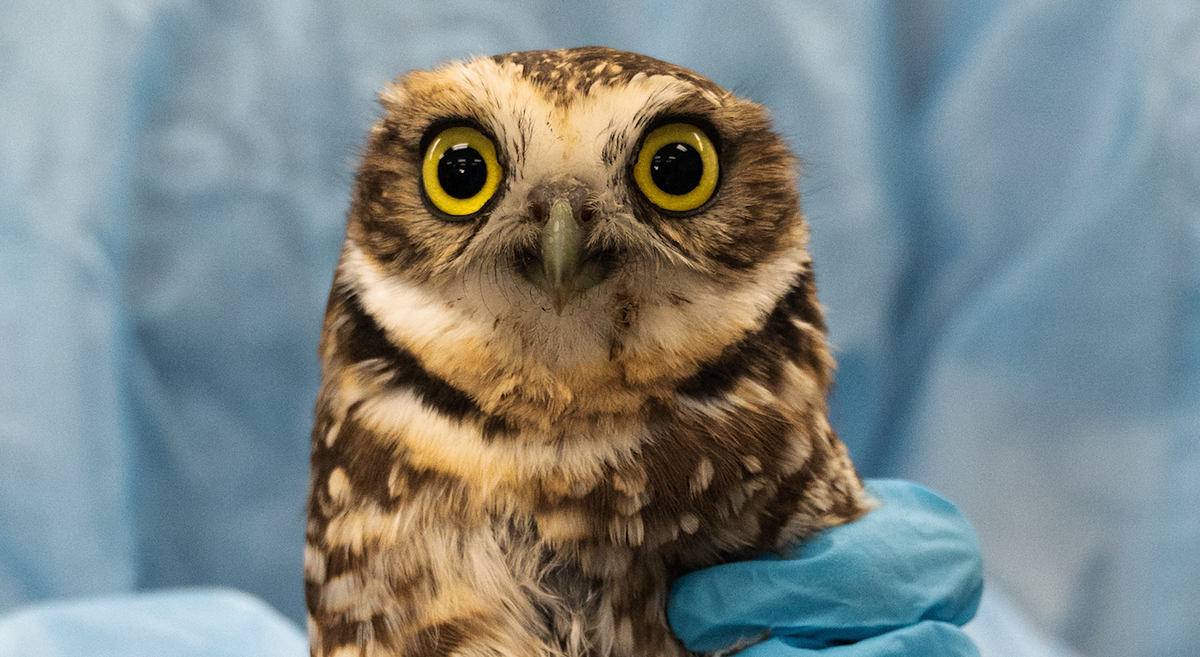Rare owl rescued from sea near Goleta Pier

SANTA BARBARA, Calif. - The press release below comes from the Santa Barbara Wildlife Care Network:
On the morning of October 6, 2024, a crew boat shuttling workers from the Goleta Pier to Platform Holly encountered something they had never expected—a Western Burrowing Owl, floating in the ocean two miles offshore. The crew, captains Daniel Madsen, Amor Cueva, and Jerry Gereminanao and engineer, Eric Benavidez, of So Cal Ship Services, were heading to the decommissioning project.
“We often see different seabirds who need assistance, but we have never seen an owl in the water,” Captain Madsen shared. Although the exact circumstances remain unknown, Burrowing Owls may migrate across the Santa Barbara Channel, so this owl may have been heading to or from the Channel Islands or was diverted by coastal wind or fog. These small, 7-10 inch owls prefer open areas like grasslands, and deserts, nesting underground in burrows often made by other animals.
Captain Madsen, who had navigated these waters many times, expertly brought the boat alongside the owl. The crew promptly rescued the owl using a bucket to fish the bird out of the water. This owl was barely moving, exhausted, and seemed cold, so the crew placed the bird in towels and took it to their engine room to keep it warm, safe, and dry until they could get to land.
The crew reached the Goleta Pier and met SBWCN volunteer and rescuer, Angela Rauhut, who transported the owl to our wildlife hospital on Fairview Avenue.
The SBWCN team took this bird straight into care starting with a thorough intake exam. Upon its arrival, it was diagnosed with minor oil contamination on its wings and chin and showed signs of moderate dehydration. The bird also had swelling in its left leg and a small laceration on its tongue, likely from biting itself during the stressful transport.
On October 8th, after the owl was stabilized and given nutritional, supportive, and wound care, the bird was transported to our partner International Bird Rescue (IBR) in San Pedro.
On October 9, once it was stabilized after its travel to IBR, the owl underwent a pre-treatment to help break down the oil and then was washed using Dawn dish soap. The washing process, led by Wildlife Rehabilitation Technician Jeanette Bates and Wildlife Rehabilitation Intern Roaa Abdalla, required extra care and a light sedation. Due to the bird's high risk of aspiration, the cleaning around its chin was done gently with a sponge. After 30 minutes of meticulous work, the oil was successfully removed.
Over the next few days, the owl’s condition fluctuated. Its weight ranged between 136 and 154 grams, and though it remained alert, it required close monitoring. The team noticed that the swelling in its leg did not appear to affect the knee joint, and x-rays conducted on October 14 confirmed that it was likely soft tissue-related. By October 19, the owl’s weight had stabilized at 140 grams, and its feather quality was good, with only minor scabbing on its wings.
Once transferred back to SBWCN it continued to regain strength, showing impressive flight stamina while housed in an aviary. The small tongue laceration had healed, the swelling in its leg had resolved, and only a broken tail feather remained as a reminder of its ordeal. Though still mildly dehydrated, the bird was nearing full recovery after 16 days in care!
This is a significant story for the world of wildlife conservation. According to the Center for Biological Diversity, the Western Burrowing Owl has seen its population decline drastically in California, losing ground in 19 of 51 counties. Only 225 breeding pairs are said to remain in central-western and southwestern parts of the state. Recently, the California Fish and Game Commission granted the owl "candidate" status for protection under the California Endangered Species Act, offering temporary safeguards while a full status review is conducted over the next 12 to 18 months. The loss of habitat from agriculture, clean energy projects and development seem to be the biggest causes for their population decline.
This Burrowing Owl’s unexpected journey—from the ocean to the care of wildlife rehabilitators—served as a powerful reminder of the perils migratory birds face. Typically found in dry, open landscapes, the ocean was a foreign and dangerous place for this owl. But thanks to the swift actions of So Cal Ship Services, and the dedicated work of the SBWCN, and IBR teams, the owl survived against the odds. It was released to rejoin its migratory path on October 22nd, and is now living its best life back in the wild thanks to the work of this amazing community network that helps protect wildlife!
